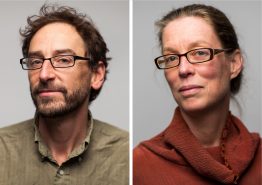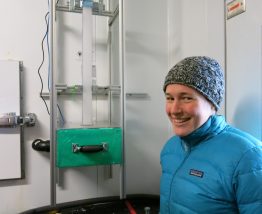It’s hard to find a place in the U.S. that isn’t impacted by wildfires and smoke. Dry landscapes, warmer temperatures and more development near forested areas all contribute to massive wildfires across North America each year. Smoke and haze from these fires can travel hundreds of miles from their source, affecting the health and wellbeing of communities across the U.S. Given these impacts, scientists rely on models that try to predict the severity of wildfires and smoke.
Read more at UW News »For some corals, meals can come with a side of microplastics
Tiny microplastic particles are about as common in the ocean today as plastic is in our daily lives. Synthetic clothing, containers, bottles, plastic bags and cosmetics all degrade and release microplastics into the environment. Corals and other marine organisms are eating microplastics that enter the waterway. Studies in this emerging field show some harmful effects, but it’s largely unknown how this ubiquitous material is impacting ocean life.
Read more at UW News »Three College of the Environment faculty members named AAAS fellows
The American Association for the Advancement of Science has named three faculty members from the University of Washington College of the Environment as AAAS Fellows, according to a Nov. 26 announcement. They are part of a cohort of 443 new fellows for 2019, all chosen by their peers for “scientifically or socially distinguished efforts to advance science or its applications.” The three College of the Environment faculty members who have been named as fellows are: Julia Parrish, professor in the School of Aquatic and Fishery Sciences and the Department of Biology, is elected for her work in marine ecology.
Read more at UW News »How do we know so much about ancient climates?
Scientists know a lot about the Earth’s climate. Over the past sixty years, they have collected temperature and precipitation information, measured the amount of carbon dioxide in Earth’s atmosphere, and charted the changing weather. But what if we want to compare today’s climate to past climates—say, a million years ago or more? Traces of those past climates—referred to as paleoclimates—remain in rocks and ice as particles that once made up the ancient atmosphere, rain and soil.
Read more »Small but mighty: five small things that have big impacts
To better understand big picture issues, it can sometimes be useful to bust out the magnifying glass and zoom in on the smaller details. Over the years, University of Washington College of the Environment researchers have discovered a multitude of ways in which seemingly small things can have giant impacts on much larger systems. We’ve compiled a list of five of the best examples of things UW researchers discovered that are small, but mighty.
Read more »





